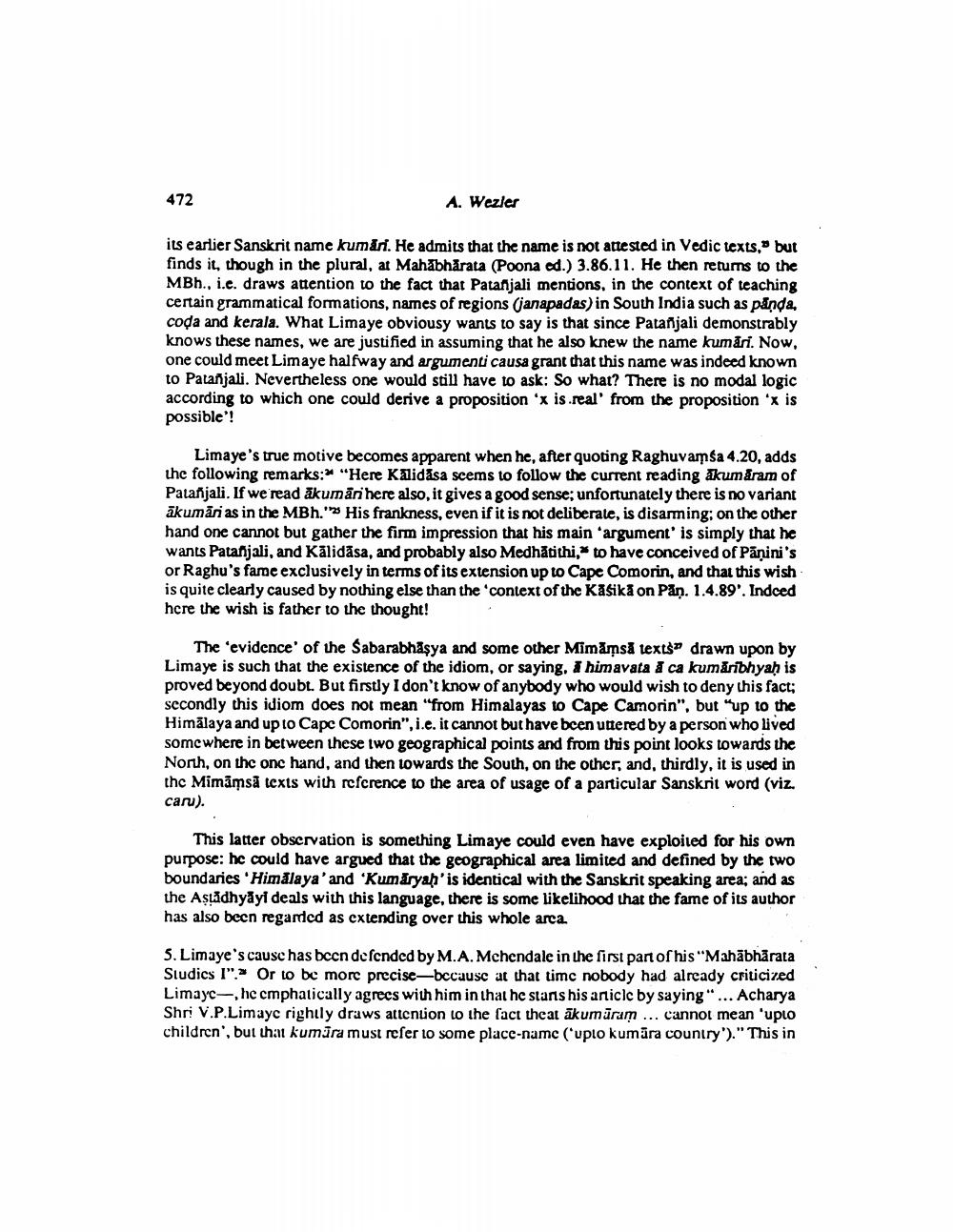Book Title: How Far Did Paninis Fame Really Extend In Patanjalis View Author(s): A Wezler Publisher: A Wezler View full book textPage 5
________________ 472 A. Wezler its earlier Sanskrit name kumar. He admits that the name is not attested in Vedic texts, but finds it, though in the plural, at Mahabharata (Poona ed.) 3.86.11. He then returns to the MBH., i.e. draws attention to the fact that Patanjali mentions, in the context of teaching certain grammatical formations, names of regions (janapadas) in South India such as panda, coda and kerala. What Limaye obviousy wants to say is that since Patanjali demonstrably knows these names, we are justified in assuming that he also knew the name kumari. Now, one could meet Limaye halfway and argumenti causa grant that this name was indeed known to Patanjali. Nevertheless one would still have to ask: So what? There is no modal logic according to which one could derive a proposition 'x is.real' from the proposition 'x is possible'! Limaye's true motive becomes apparent when he, after quoting Raghuvamsa 4.20, adds the following remarks: "Here Kalidasa seems to follow the current reading akumaram of Patanjali. If we'read ākumari here also, it gives a good sense; unfortunately there is no variant ākumāri as in the MBh. His frankness, even if it is not deliberate, is disarming: on the other hand one cannot but gather the firm impression that his main 'argument is simply that he wants Patanjali, and Kalidasa, and probably also Medhatithi, to have conceived of Pāṇini's or Raghu's fame exclusively in terms of its extension up to Cape Comorin, and that this wish is quite clearly caused by nothing else than the 'context of the Kasika on Pan. 1.4.89'. Indeed here the wish is father to the thought! The 'evidence of the Sabarabhāşya and some other Mimāmsă texts drawn upon by Limaye is such that the existence of the idiom, or saying, I himavara i ca kumăríbhyah is proved beyond doubt. But firstly I don't know of anybody who would wish to deny this fact; secondly this idiom does not mean “from Himalayas to Cape Camorin", but "up to the Himalaya and up to Cape Comorin", i.e. it cannot but have been uttered by a person who lived somewhere in between these two geographical points and from this point looks towards the North, on the one hand, and then towards the South, on the other, and, thirdly, it is used in thc Mimāmsā texts with rcfcrence to the area of usage of a particular Sanskrit word (viz. caru). This latter observation is something Limaye could even have exploited for his own purpose: he could have argued that the geographical area limited and defined by the two boundaries 'Himalaya' and 'Kumăryah' is identical with the Sanskrit speaking area; and as the Astådhyayi deals with this language, there is some likelihood that the fame of its author has also been regarded as extending over this whole arca. 5. Limaye's causc has been defended by M.A. Mchendale in the first part of his "Mahābhārata Studies I". Or to be more precise-bccausc at that time nobody had already criticized Limayche cmphatically agrecs with him in that he stars his anicic by saying " ... Acharya Shri V.P.Limayc rightly draws attention to the fact theat ākumāram ... cannot mean 'uplo children, but that kumūra must refer to some place-name ("uplo kumāra country')." This inPage Navigation
1 ... 3 4 5 6 7 8 9 10 11
